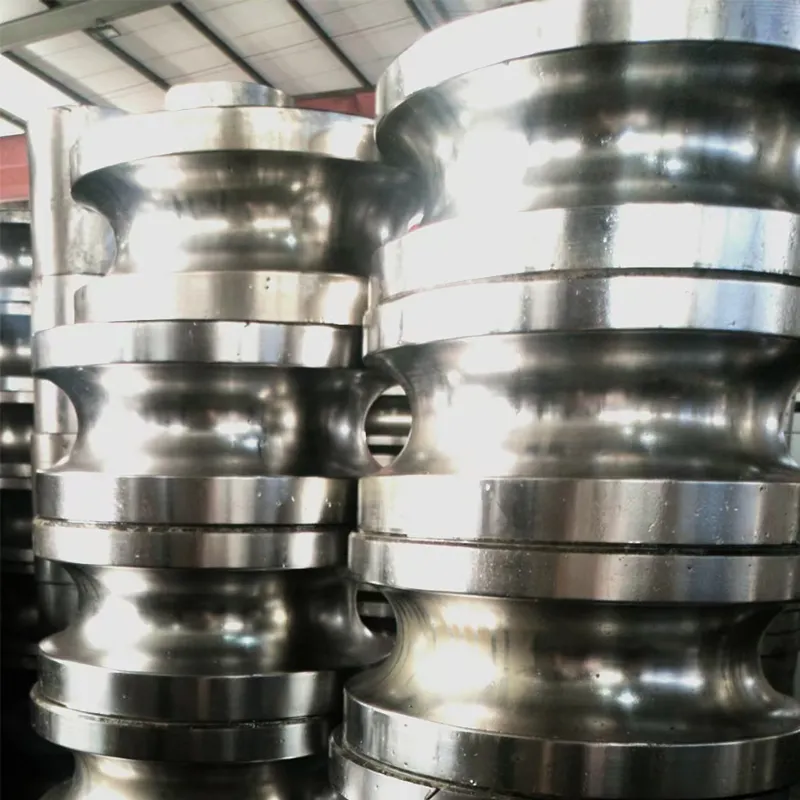flat straightening machine
Understanding Flat Straightening Machines An Essential Tool in Metal Processing
Flat straightening machines play a crucial role in the metal processing industry, particularly in the fabrication and preparation of metal sheets and plates. These machines are specifically designed to eliminate distortions and irregularities in metal surfaces, ensuring that the finished product meets the required specifications for various applications. In this article, we will explore the working principles, types, applications, and benefits of flat straightening machines.
The Working Principle
Flat straightening machines operate based on mechanical force. The process generally involves feeding warped or curved metal sheets between a series of rolls or using hydraulic systems to apply pressure. The machine systematically bends and straightens the material, adjusting the metal's memory to achieve uniform flatness. The straightening process can be performed in either a continuous or intermittent manner, depending on the machine design and the specifications of the metal being processed.
The operation begins with the metal sheet being fed into the machine. As it passes through the rollers or is subjected to hydraulic pressure, the machine continuously monitors and adjusts the force applied to ensure optimal straightening without damaging the material. Advanced models include computer numerical control (CNC) systems that allow for precise adjustments and settings, enhancing the accuracy and repeatability of the straightening process.
Types of Flat Straightening Machines
There are several types of flat straightening machines available, each designed for specific applications and metal types
1. Roll Straighteners These are the most common type, utilizing multiple rollers to gradually flatten the metal sheet. The configuration of the rollers can be adjusted based on the thickness and alloy of the material being processed.
2. Hydraulic Straighteners These machines utilize hydraulic cylinders to apply force directly to the metal, allowing for greater control and adaptability, particularly for thicker or more complex materials.
3. Mechanical Straighteners These machines use mechanical means, such as gears and levers, to apply force to the metal sheet. While they may not offer the same precision as hydraulic machines, they can be more cost-effective for certain applications.
4. CNC Straighteners Incorporating advanced technology, CNC straightening machines offer higher precision and can be programmed for various settings, allowing for better consistency and efficiency.
flat straightening machine

Applications of Flat Straightening Machines
Flat straightening machines are employed across a wide range of industries, including automotive, aerospace, construction, and manufacturing. They are used for processing materials such as
- Steel Sheets Essential for automotive body parts, construction components, and structural applications. - Aluminum Plates Widely used in the aerospace industry, where weight and precision are critical. - Copper and Brass Sheets Common in electronics and plumbing industries.
The main goal of using flat straightening machines is to ensure that the materials meet rigorous standards, allowing for better quality control and improved performance in the final application.
Benefits of Using Flat Straightening Machines
Utilizing flat straightening machines offers several advantages
1. Improved Quality Straightened metal sheets have fewer defects, leading to improved quality of the final products.
2. Increased Efficiency With rapid processing times and the ability to handle various thicknesses, these machines enhance productivity in manufacturing environments.
3. Cost Savings By minimizing material waste and reducing the need for extensive rework, flat straightening machines can lead to significant cost savings.
4. Precision Advanced straightening technology allows for high levels of accuracy, meeting even the most stringent industry standards.
In conclusion, flat straightening machines are indispensable in the metal processing industry. Their ability to provide precise and efficient straightening of flat metal sheets not only elevates the quality of the final product but also streamlines manufacturing processes. As technology continues to evolve, we can expect further innovations that will enhance the functionality and efficiency of these essential machines, reaffirming their pivotal role in modern manufacturing.
-
High Frequency Straight Seam Welded Pipe Production Line-BzZhou Xinghua Machinery Equipment Manufacturing Co., LTD.|Precision Welding, High EfficiencyNewsJul.30,2025
-
High Frequency Straight Seam Welded Pipe Production Line|BzZhou Xinghua|Precision Welding&EfficiencyNewsJul.30,2025
-
High Frequency Straight Seam Welded Pipe Production Line - BzZhou Xinghua|Precision Engineering&EfficiencyNewsJul.30,2025
-
High-Frequency Straight Seam Welded Pipe Production Line-BzZhou Xinghua Machinery Equipment Manufacturing Co., LTD.NewsJul.30,2025
-
High-Frequency Straight Seam Welded Pipe Production Line-BzZhou Xinghua Machinery Equipment Manufacturing Co., LTD.|Precision Manufacturing, High EfficiencyNewsJul.30,2025
-
High Frequency Straight Seam Welded Pipe Production Line-BzZhou Xinghua Machinery Equipment Manufacturing Co., LTD.|Precision Steel Pipe Manufacturing&Industrial EfficiencyNewsJul.29,2025


